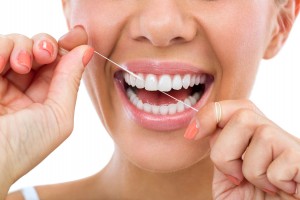 It’s a question we hear often at the office of Rock Creek Dental: “Is flossing necessary?”
It’s a question we hear often at the office of Rock Creek Dental: “Is flossing necessary?”
It’s excellent to say that you brush your teeth twice a day, avoid sugary snacks between meals, and are consistent with your Auburn dentist appointments. But when it comes to your well-being, flossing is just as important as all of these steps.
Most patients feel the important first goal of flossing is only removing food from between your teeth, but that’s not the whole truth! Flossing more importantly cleans out plaque — the hard, bacterial biofilm sticking to the enamel of your teeth. Plaque is the first culprit creating tooth decay, gum disease, and even bad breath. While brushing is a terrific beginning, flossing cleans out the plaque where your brush cannot reach, like the gaps between the teeth. Additionally, flossing polishes the surfaces of your teeth and reduces the chance of gum disease.
Do You Have Time to Floss?
Many feel that they just do not have time to floss. But truthfully, when done well, flossing only takes a few moments a day. Once you get into a routine, flossing is simple to do, and helps your mouth seem cleaner. More importantly, it greatly improves your dental wellness.
If you only floss once a day, the best time is soon before going to sleep. Since saliva production declines during sleep, plaque in your mouth becomes concentrated, and therefor more harmful.
“So where do I begin?” you ask. Let’s discuss the steps.
 Recommended Flossing Methods
Recommended Flossing Methods
Since you’re sticking your fingers into your mouth, be certain you clean your hands before reaching for the floss. Then, proceed with the following steps:
- Make certain you have sufficient floss, then break off a piece about eighteen inches long. This might seem like a lot, but it lets you administer a clean segment of floss as you progress from tooth to tooth. Wind it around your middle finger, allowing a couple of inches to work with.Tip: Relax the cheeks and lips to make it easier to get your fingers into your mouth.
- Gently slide the floss between your teeth, without popping or snapping it. Make a “C” shape with the floss as you wrap it around your tooth, then guide the floss up and down the tooth’s enamel, from top to bottom.Tip: There are two sides to each gap between the teeth. Floss each side separately to avoid injuring the triangle section of gum that rests in between.
- Progress from one tooth to the next. As you do, use a clean section of floss.
- Work all around the set of teeth, and do not overlook the backsides of the molars, which commonly are neglected.
Some studies conclude that flossing before you brush your teeth is actually more effective than flossing afterwards. The thinking is that if you eradicate food and plaque first, the fluoride in your toothpaste makes better contact with the enamel on the teeth, making them stronger. Either way, the most noteworthy point is to floss every single day. Battle microorganisms by working away the plaque that protects them and the food they live on! With daily flossing, you too might have teeth that last you a lifetime!
Schedule Your Appointment

 Recommended Flossing Methods
Recommended Flossing Methods